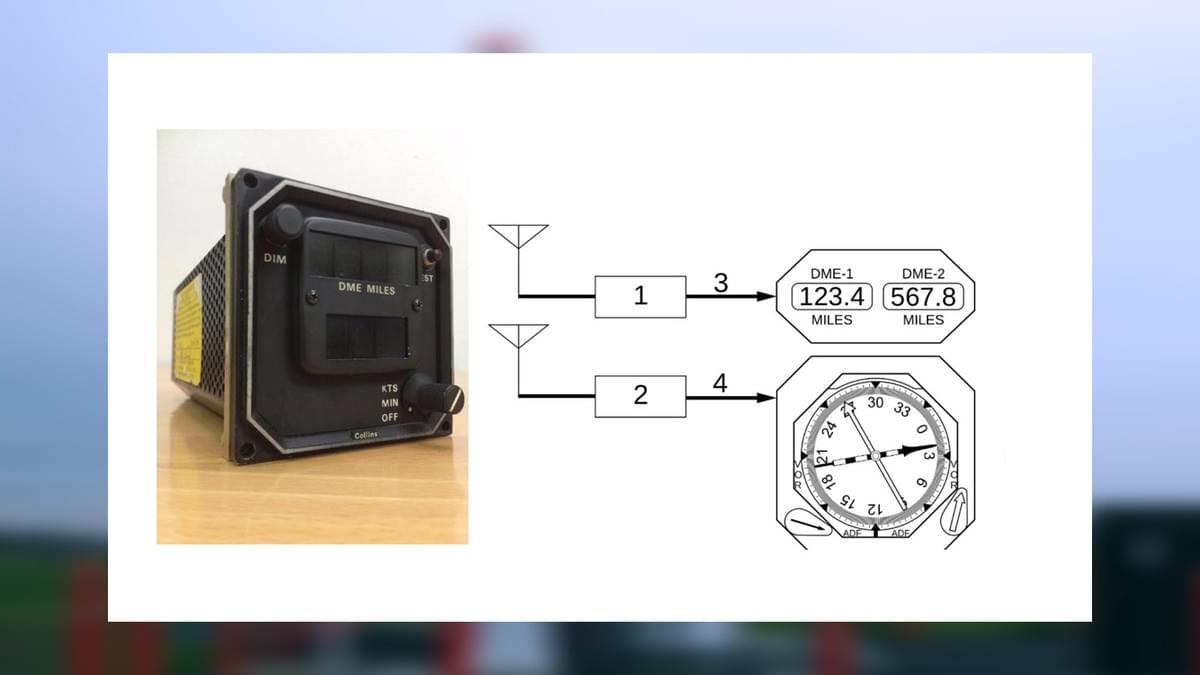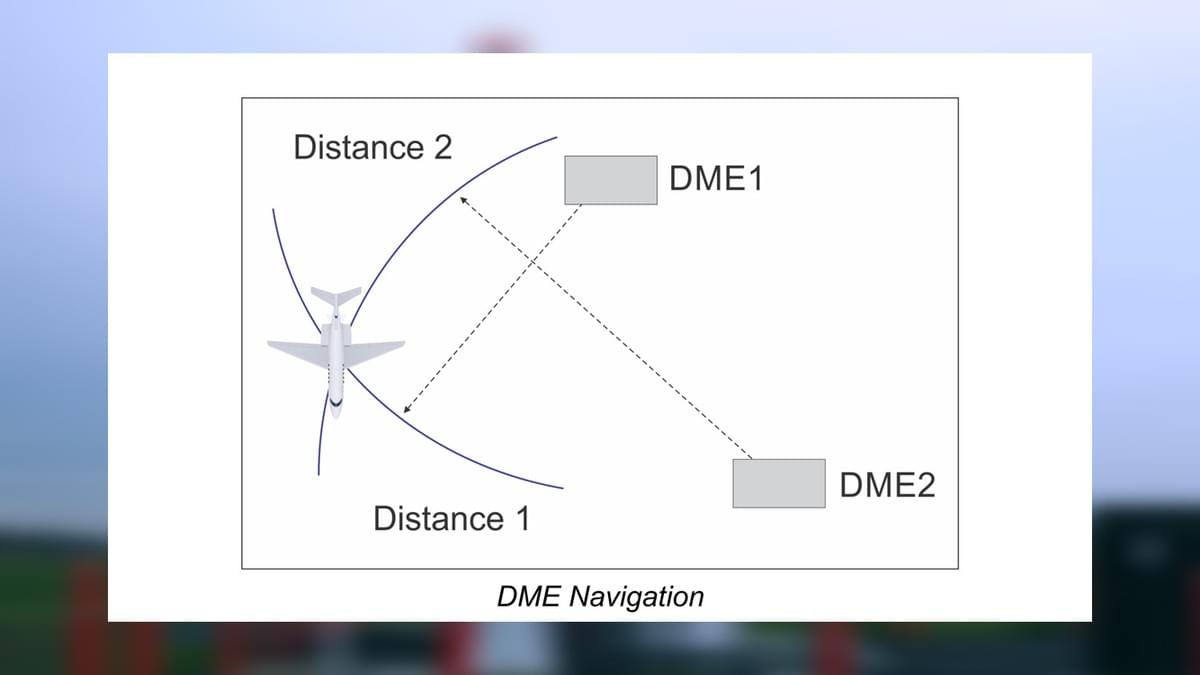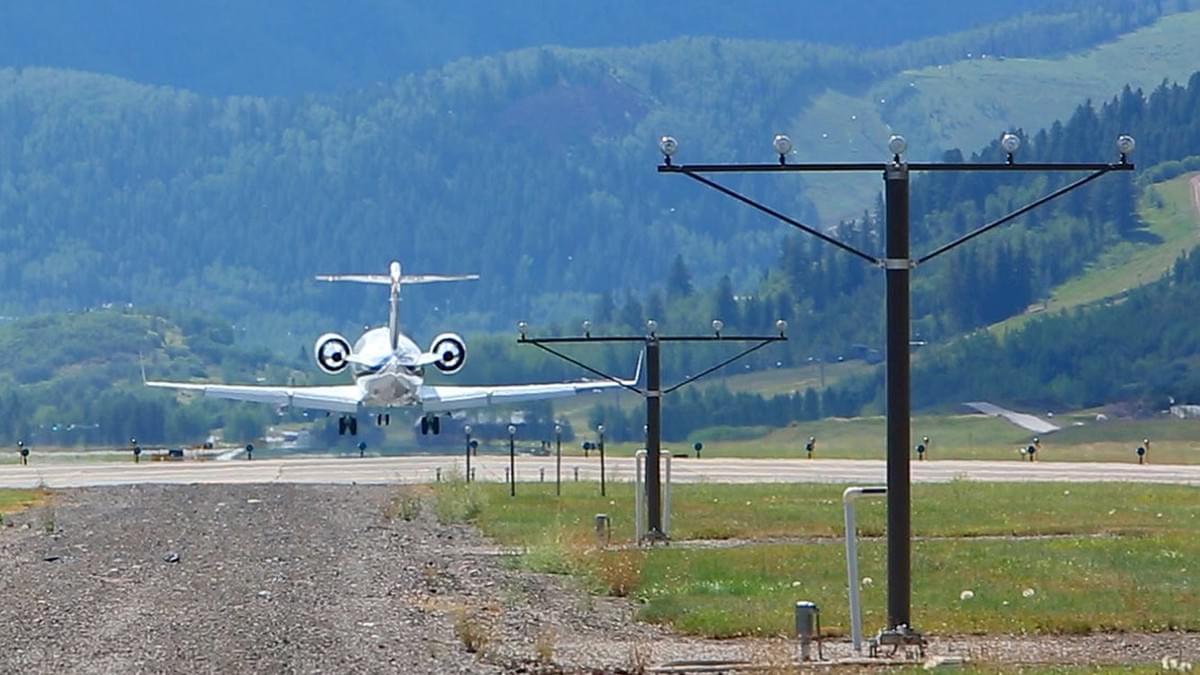DME aircraft systems are pivotal in modern aviation, serving as a cornerstone for precise navigation and flight safety. These systems, short for Distance Measuring Equipment, enable aircraft to determine their exact distance from ground-based stations, ensuring pilots have accurate data at every phase of flight. In the dynamic world of aviation, where split-second decisions can make all the difference, DME aircraft technology stands out as a reliable and indispensable tool. From commercial airliners to small private planes, DME aircraft systems are integrated into the avionics suite, working in tandem with other navigation tools to provide a comprehensive picture of an aircraft’s position. This article delves into every aspect of DME aircraft systems, exploring their functionality, types, integration with other technologies, maintenance, and why they remain a vital component in aviation today.
What Are DME Aircraft Systems?
DME aircraft systems are specialized avionics that calculate the distance between an aircraft and a ground-based DME station. This is achieved through a simple yet effective process: the aircraft’s DME transponder sends out a radio signal, which is received by the ground station. The ground station then transmits a reply signal back to the aircraft. By measuring the time it takes for the signal to travel to the ground station and return, the DME aircraft system can compute the slant range distance—this is the straight-line distance between the aircraft and the ground station, accounting for the aircraft’s altitude.
The core purpose of DME aircraft systems is to provide real-time distance information, which is displayed on the cockpit instruments. Pilots use this data to navigate along airways, maintain safe distances from other aircraft, execute precise approaches to runways, and ensure they stay on course during all phases of flight. Unlike some navigation systems that rely on directional information, DME aircraft systems focus solely on distance, making them a unique and essential part of the navigation ecosystem.
One of the key advantages of DME aircraft systems is their accuracy. Even in challenging weather conditions or areas with limited visibility, DME aircraft technology can provide reliable distance measurements, often within a few hundred feet. This level of precision is crucial during takeoff, landing, and when flying in crowded airspace, where maintaining proper separation from other aircraft is paramount.
DME aircraft systems operate on ultra-high frequency (UHF) bands, typically between 962 and 1213 MHz. This frequency range is chosen because it allows for clear signal transmission, with minimal interference from other radio sources. The ground-based DME stations are strategically located along major air routes, near airports, and at key navigational waypoints, ensuring that DME aircraft systems have consistent coverage across most flight paths.
How DME Aircraft Systems Work
To understand how DME aircraft systems function, it’s important to break down the process into steps. First, the airborne DME equipment in the aircraft emits a pair of radio pulses. These pulses are unique to DME aircraft systems, designed to avoid interference with other radio signals used in aviation. The ground-based DME station, upon receiving these pulses, immediately sends back a pair of reply pulses.
The time interval between the transmission of the original pulses and the reception of the reply pulses is measured by the DME aircraft system. Since radio waves travel at the speed of light (approximately 186,000 miles per second), the system can convert this time interval into a distance measurement. It’s important to note that the distance calculated is the slant range, which is slightly longer than the horizontal distance when the aircraft is at altitude. However, for practical navigation purposes, this difference is negligible at higher altitudes, and pilots are trained to account for it during low-altitude operations, such as approaches and departures.
DME aircraft systems are designed to handle multiple aircraft simultaneously. A single ground-based DME station can communicate with dozens of DME aircraft systems at once, thanks to the unique timing of the pulse pairs. Each aircraft’s DME transponder sends pulses at a specific rate, and the ground station can differentiate between them, ensuring that each DME aircraft system receives an accurate reply.
Another important aspect of how DME aircraft systems work is their integration with other navigation instruments. For example, when paired with a VOR (VHF Omnidirectional Range) system, DME aircraft systems provide both distance and direction information, allowing pilots to determine their position more precisely. This combination, known as VOR/DME, has been a staple in aviation navigation for decades, offering a reliable way to navigate along established airways.

DME Aircraft Antennas: Features and Placement
The DME aircraft antenna is a critical component of the system, responsible for transmitting and receiving radio signals between the aircraft and ground-based stations. Here are some key features and considerations regarding DME aircraft antennas:
Features of DME Aircraft Antennas
- Frequency Range: DME aircraft antennas are designed to operate within the UHF band (962–1213 MHz), which is optimal for DME signal transmission.
- Polarization: Most DME aircraft antennas use vertical polarization, which helps minimize signal loss and interference.
- Gain: The gain of an antenna refers to its ability to focus radio waves in a particular direction. DME aircraft antennas typically have a moderate gain, balancing the need for long-range communication with the ability to receive signals from multiple directions.
- Durability: DME aircraft antennas are built to withstand the harsh conditions of flight, including high speeds, extreme temperatures, and exposure to rain, snow, and ice. They are often made from materials like aluminum or composite plastics, which are both lightweight and strong.
Placement of DME Aircraft Antennas
The placement of the DME aircraft antenna is crucial for optimal performance. Here are some key considerations:
- Line of Sight: The antenna must have a clear line of sight to the ground-based DME stations to ensure reliable signal transmission and reception. This means it is typically mounted on the underside of the aircraft’s fuselage or on the tail, where it has an unobstructed view of the ground.
- Avoiding Interference: The antenna should be placed away from other radio antennas and avionics components that could cause interference. For example, it is often positioned away from VOR antennas, GPS antennas, and communication antennas to minimize signal disruption.
- Aerodynamics: The antenna’s placement should not significantly impact the aircraft’s aerodynamics. Manufacturers design DME aircraft antennas to be streamlined, reducing drag and ensuring that they do not affect the aircraft’s performance.
- Dual Antennas: Some larger aircraft are equipped with two DME aircraft antennas, one on the left and one on the right side of the fuselage. This provides redundancy, ensuring that the system can continue to operate even if one antenna fails.
DME Aircraft Maintenance and Testing
Regular maintenance and testing are essential to ensure that DME aircraft systems operate reliably and accurately. Here’s an overview of the key maintenance and testing procedures:
Routine Inspections
- Visual Inspections: Technicians visually inspect the DME aircraft antenna for damage, such as cracks, corrosion, or loose connections. They also check the wiring and connectors for signs of wear or damage.
- Functional Checks: The DME aircraft system is tested to ensure that it can transmit and receive signals correctly. This involves checking the display unit to ensure that distance readings are accurate and that the system responds properly to changes in the aircraft’s position.
- Calibration: Over time, DME aircraft systems can drift out of calibration, leading to inaccurate distance measurements. Calibration involves adjusting the system to ensure that it meets the required accuracy standards. This is typically done using specialized test equipment that simulates signals from ground-based DME stations.
Performance Testing
- Range Testing: The system’s ability to receive signals from ground-based DME stations at various distances is tested. This ensures that the system can operate effectively across its intended range.
- Interference Testing: The system is tested to ensure that it is not affected by interference from other radio sources, such as communication radios or other avionics systems.
- Environmental Testing: DME aircraft systems are tested under various environmental conditions, such as extreme temperatures, humidity, and vibration, to ensure that they can operate reliably in the harsh conditions of flight.
Troubleshooting Common Issues
- Signal Loss: If the DME aircraft system is unable to receive signals from a ground-based station, technicians check the antenna for damage, the wiring for breaks, and the transponder and receiver for malfunctions.
- Inaccurate Distance Readings: Inaccurate readings can be caused by calibration issues, interference, or problems with the ground-based station. Technicians use test equipment to diagnose the cause and make the necessary adjustments.
- Display Problems: If the distance readings are not displayed correctly, technicians check the display unit for malfunctions and ensure that it is properly connected to the rest of the system.
Advantages of DME Aircraft Systems
DME aircraft systems offer numerous advantages that make them an essential part of aviation navigation:
- Accuracy: DME aircraft systems provide highly accurate distance measurements, often within a few hundred feet, ensuring that pilots have reliable data for navigation.
- Reliability: Unlike GPS, which relies on satellite signals, DME aircraft systems use ground-based stations, which are less susceptible to interference or disruption. This makes them a reliable backup navigation tool.
- Simplicity: DME aircraft systems are relatively simple to operate and maintain, with straightforward displays that show distance information clearly.
- Integration: DME aircraft systems integrate seamlessly with other navigation systems, such as VOR, GPS, and RNAV, providing a comprehensive navigation solution.
- Coverage: Ground-based DME stations are strategically located across most flight paths, ensuring that DME aircraft systems have consistent coverage, even in remote areas.
Challenges and Limitations of DME Aircraft Systems
While DME aircraft systems are highly useful, they do have some challenges and limitations:
- Line of Sight Requirement: DME signals require a clear line of sight between the aircraft and the ground-based station. This means that they may not work effectively in mountainous areas or during low-altitude flight in rugged terrain, where the line of sight is blocked.
- Limited Range: The range of DME aircraft systems is limited by the power of the ground-based stations and the altitude of the aircraft. At low altitudes, the range is significantly reduced, which can be a problem during takeoff and landing in areas with few DME stations.
- Ground Station Dependence: DME aircraft systems rely on ground-based stations, which require maintenance and can be affected by technical issues or natural disasters. This dependence means that if a ground station fails, DME aircraft systems in the area may be unavailable.
- Interference: While DME aircraft systems are designed to avoid interference, they can still be affected by other radio signals operating in the UHF band. This can lead to inaccurate distance readings or signal loss.
The Future of DME Aircraft Technology
As aviation technology continues to evolve, DME aircraft systems are also undergoing improvements to enhance their performance and integration with other systems. Here are some trends that are shaping the future of DME aircraft technology:
- Digitalization: Modern DME aircraft systems are becoming more digital, with advanced processing capabilities that improve accuracy and reduce interference. Digital DME systems can also integrate more easily with other digital avionics, such as GPS and RNAV, providing a more seamless navigation experience.
- Miniaturization: Advances in technology are allowing DME aircraft systems to become smaller and lighter, making them suitable for a wider range of aircraft, including small drones and urban air mobility vehicles.
- Increased Integration: DME aircraft systems are being integrated more closely with other navigation and surveillance systems, such as Automatic Dependent Surveillance-Broadcast (ADS-B). This integration allows for more efficient air traffic management and enhanced safety.
- Satellite-Based DME: While ground-based DME stations will remain important, there is ongoing research into satellite-based DME systems. These systems would use satellites instead of ground-based stations, providing global coverage and overcoming the line of sight and range limitations of traditional DME aircraft systems.
Why DME Aircraft Systems Are Essential for Pilots
For pilots, DME aircraft systems are more than just a navigation tool—they are a critical part of ensuring safe and efficient flight. Here’s why they are essential:
- Situational Awareness: DME aircraft systems provide pilots with real-time distance information, helping them maintain situational awareness of their position relative to key navigational points, other aircraft, and the ground
and terrain below. This awareness is crucial for making informed decisions, especially in complex airspace or during unexpected weather changes.
- Decision-Making Support: DME aircraft data helps pilots make critical decisions, such as adjusting speed to meet arrival times, choosing alternative routes to avoid congestion, or initiating climbs or descents at the optimal point. For example, if a pilot knows they are 20 nautical miles from a waypoint and need to descend 5,000 feet, they can calculate the required rate of descent using DME distance, ensuring a smooth and safe transition.
- Regulatory Compliance: Many aviation regulatory bodies, such as the Federal Aviation Administration (FAA) and the European Union Aviation Safety Agency (EASA), require DME aircraft systems on certain types of flights, particularly in controlled airspace or during instrument flight rules (IFR) operations. Having a functional DME aircraft system ensures compliance with these regulations, avoiding penalties and ensuring operational approval.
- Redundancy and Safety: In aviation, redundancy is a key safety principle, and DME aircraft systems provide an additional layer of redundancy for navigation. If primary systems like GPS fail, DME aircraft systems can step in, allowing pilots to continue navigating safely. This redundancy is especially important in remote areas where other navigation aids may be limited.

DME Aircraft Systems in Different Aircraft Types
DME aircraft systems are used across a wide range of aircraft, from small general aviation planes to large commercial airliners. Here’s how they are utilized in different types of aircraft:
Commercial Airliners
In commercial airliners, DME aircraft systems are part of the integrated avionics suite, working alongside GPS, inertial navigation systems (INS), and other advanced tools. They are used primarily for en route navigation, ensuring the aircraft stays on course and maintains proper separation from other airliners. DME aircraft data is also integrated into the flight management system (FMS), which automates many navigation tasks, such as calculating optimal routes and descent profiles.
Commercial airliners often have multiple DME aircraft systems for redundancy. This ensures that even if one system fails, the other can continue to provide accurate distance information, maintaining safety during long-haul flights over oceans or remote areas where ground-based navigation aids are sparse.
General Aviation Aircraft
In general aviation, which includes small private planes, helicopters, and business jets, DME aircraft systems are equally important, though they may be simpler in design. Many general aviation aircraft rely on VOR/DME combinations for navigation, especially in areas where GPS coverage is not reliable or where the cost of advanced avionics is prohibitive.
For example, a private pilot flying from a small airport to another may use a VOR/DME station to navigate along a direct route, using the DME aircraft system to monitor their distance from the station and ensure they stay on track. DME aircraft systems in general aviation also play a key role in instrument flight, allowing pilots to conduct safe approaches to airports in low-visibility conditions.
Military Aircraft
Military aircraft use DME aircraft systems for a variety of missions, including combat operations, reconnaissance, and transport. In military applications, DME aircraft systems are often ruggedized to withstand harsh environments and jamming attempts. They may also be integrated with military-specific navigation systems, such as TACAN (Tactical Air Navigation), which combines DME with azimuth information for precise positioning in combat zones.
Military pilots rely on DME aircraft systems to navigate in hostile environments where GPS signals may be jammed or unavailable. The ability to obtain accurate distance information from ground-based stations ensures that missions can proceed even when other navigation tools are compromised.
International Standards for DME Aircraft Systems
To ensure consistency and safety across global aviation, DME aircraft systems are governed by international standards set by organizations such as the International Civil Aviation Organization (ICAO). These standards cover various aspects of DME aircraft technology, including:
- Frequency Allocation: ICAO specifies the UHF frequency band (962–1213 MHz) for DME aircraft systems to prevent interference with other radio services.
- Accuracy Requirements: DME aircraft systems must meet strict accuracy standards, typically within ±0.25 nautical miles or 3% of the measured distance, whichever is greater. This ensures that distance measurements are reliable across different systems and locations.
- Signal Characteristics: The format and timing of DME pulses are standardized to ensure compatibility between airborne systems and ground-based stations. This allows aircraft from different countries and manufacturers to use DME stations worldwide.
- Performance in Adverse Conditions: Standards also specify that DME aircraft systems must operate reliably in adverse weather conditions, such as heavy rain, snow, and fog, as well as in areas with high electromagnetic interference.
Compliance with these international standards is mandatory for aircraft operators and manufacturers, ensuring that DME aircraft systems work seamlessly across borders and contribute to global aviation safety.

Common Myths About DME Aircraft Systems
Despite their long-standing use in aviation, there are several myths and misconceptions about DME aircraft systems. Let’s debunk some of the most common ones:
- Myth: DME is obsolete because of GPS. While GPS has become a primary navigation tool, DME aircraft systems remain essential as a backup. GPS signals are vulnerable to interference and satellite outages, making DME a reliable alternative. In many parts of the world, especially in remote areas, DME is still the primary navigation aid.
- Myth: DME only works with VOR. While VOR/DME combinations are common, DME aircraft systems can operate independently. Standalone DME stations are used in many locations, providing distance information without directional data. Additionally, DME can be integrated with other systems like RNAV and ILS, as discussed earlier.
- Myth: DME is difficult to use. Modern DME aircraft systems are designed to be user-friendly, with clear displays and intuitive controls. Pilots receive training on DME operation as part of their flight training, and the system’s functionality is straightforward: it displays distance to a selected station, requiring minimal input from the pilot.
- Myth: DME has a short range. While DME range is affected by altitude, high-power ground stations can provide coverage up to 199 nautical miles, which is sufficient for most en route navigation. At cruising altitudes, aircraft can receive DME signals from hundreds of miles away, ensuring continuous coverage along major routes
Training for Pilots on DME Aircraft Systems
Proper training is essential for pilots to use DME aircraft systems effectively. Flight training programs include comprehensive instruction on DME operation, covering:
- System Basics: Pilots learn how DME aircraft systems work, including the principles of pulse transmission, time measurement, and distance calculation.
- Display Interpretation: Training focuses on reading DME displays, understanding slant range vs. horizontal distance, and interpreting distance information in different flight phases.
- Integration with Other Systems: Pilots learn how to combine DME data with VOR, GPS, and other navigation tools to determine position and navigate accurately.
- Troubleshooting: Pilots are trained to recognize common DME issues, such as signal loss or inaccurate readings, and to take appropriate action, such as switching to a backup station or using alternative navigation methods.
Recurrent training ensures that pilots stay up-to-date with advances in DME aircraft technology and maintain proficiency in using these systems throughout their careers.
Case Studies: DME Aircraft Systems in Action
Real-world examples highlight the importance of DME aircraft systems in ensuring safe and efficient flight. Here are two case studies:
Case Study 1: GPS Outage Over Remote Terrain
A commercial airliner en route from Europe to Asia experienced a sudden GPS outage while flying over a remote mountainous region. With no GPS signal, the crew relied on DME aircraft systems and VOR stations to navigate. By monitoring distance information from nearby DME stations, they were able to stay on course and maintain safe separation from other aircraft. The DME data also allowed them to calculate their position accurately, ensuring they descended at the correct point for their approach to the destination airport. This incident demonstrated how DME aircraft systems serve as a critical backup during GPS failures.
Case Study 2: Precision Approach in Low Visibility
A general aviation pilot was attempting to land at a small airport during a foggy morning, with visibility reduced to less than a mile. The airport’s ILS was out of service, but it had a DME station co-located with a VOR. Using the DME aircraft system, the pilot was able to follow a predefined approach path, using distance information to determine when to descend and align with the runway. The precise distance measurements provided by DME allowed the pilot to land safely despite the low visibility, highlighting the system’s value in instrument flight conditions.
Choosing the Right DME Aircraft System for Your Needs
When selecting a DME aircraft system, several factors should be considered, depending on the type of aircraft and its intended use:
- Aircraft Type: Smaller general aviation aircraft may require a basic DME system with essential features, while commercial airliners need advanced systems with integration capabilities and redundancy.
- Range Requirements: Consider the typical flight routes. If the aircraft frequently flies long distances over remote areas, a DME system with a longer range and compatibility with high-power ground stations is necessary.
- Integration Capabilities: Ensure the DME system can integrate with other avionics, such as GPS, FMS, and displays, to provide a seamless navigation experience.
- Regulatory Compliance: Verify that the system meets international standards and the requirements of aviation authorities in the regions where the aircraft will operate.
- Reliability and Maintenance: Choose a system from a reputable manufacturer with a track record of reliability. Consider the availability of maintenance support and spare parts to minimize downtime.
Consulting with avionics experts and fellow pilots can also help in selecting the right DME aircraft system for specific operational needs.
The Economic Impact of DME Aircraft Systems
DME aircraft systems contribute to the efficiency and cost-effectiveness of aviation operations in several ways:
- Fuel Savings: By providing accurate distance information, DME helps pilots maintain optimal flight paths, reducing unnecessary detours and minimizing fuel consumption. This is especially important for commercial airlines, where fuel costs are a significant expense.
- Reduced Delays: DME aircraft systems help maintain efficient air traffic flow by enabling precise positioning and separation of aircraft. This reduces congestion and delays at airports and along busy air routes.
- Lower Training Costs: DME systems are relatively simple to operate, reducing the time and cost of pilot training compared to more complex navigation systems.
- Long-Term Reliability: Ground-based DME stations have a long lifespan and require minimal maintenance compared to satellite systems, making them a cost-effective navigation solution for aviation authorities and operators.
These economic benefits, combined with their safety advantages, make DME aircraft systems a valuable investment for the aviation industry.
Conclusion: The Enduring Importance of DME Aircraft Systems
In conclusion, DME aircraft systems are an indispensable part of modern aviation, providing accurate distance information that supports safe and efficient flight across all phases of operation. From commercial airliners to military aircraft, DME technology ensures pilots have reliable navigation data, even when other systems fail.
While GPS and other advanced technologies have transformed aviation navigation, DME aircraft systems remain relevant due to their reliability, simplicity, and ability to operate independently of satellite signals. Their integration with other navigation tools, compliance with international standards, and role in ensuring regulatory compliance further solidify their importance.
As aviation continues to evolve, DME aircraft systems will adapt and improve, with advancements in digitalization, miniaturization, and integration enhancing their performance. Whether as a primary navigation aid or a critical backup, DME aircraft systems will continue to play a vital role in keeping the skies safe for decades to come.
For pilots, operators, and aviation enthusiasts, understanding DME aircraft systems is essential for appreciating the technology that underpins modern flight. By recognizing their value and ensuring their proper use and maintenance, we can continue to benefit from the reliability and precision that DME brings to aviation navigation.

